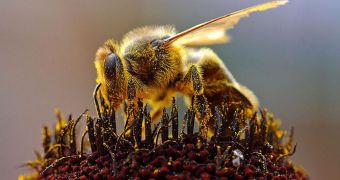In many movies and books, we are shown that each time someone inadvertently hits a bee hive, than all of the members of that colony will begin to swarm, unleashing their full fury on the assailant. Now, after a large number of researchers failed in identifying the hierarchy responsible for releasing the call to arms, a group of investigators from the Cornell University, in New York, finally manage to crack the riddle. They show that a small group of individuals, which act as “pied pipers,” are responsible for emitting the calls that make the colony swarm.
This very special class of bees releases a piping signal, which has the sole function of making the entire colony leave the nest in an explosive manner, generating the effect sought-for by comedy writers when they imagine such scenes. With the new investigation, researchers have finally managed to track down the exact individuals that are responsible for this, and their discovery is published in the latest issue of the respected scientific journal Behavioral Ecology and Sociobiology. But the bees do not use swarming as a means to fend off intruders alone, the BBC News reports.
The large honeybee, also called Apis mellifera, also organizes such mass departures from the hive during the mating season, when workers and queens need to found a new colony at a different location. Beekeepers have known about this habit for centuries, and they even managed to find ways of preventing the mass exodus of bees, but investigators have had a very tough time in understanding how the bees manage to synchronize their behavior. “In this study we wanted to determine what bees are responsible for organizing this mass departure, and how they organize this process in an efficient manner,” explains CU expert Dr Juliana Rangel. Colleagues Sean Griffin and professor Thomas Seeley also collaborated in the research.
“Our study is the first one to reveal the identity of the signallers that initiate a swarm's departure from the hive,” the expert adds. She mentions that the departure takes place in two stages. First, bees called nest-site scouts release a piping signal that is directly responsible for making the other bees start warming up their muscles for departure. This is basically what primes the insects for swarming. The scouts then produce a “buzz-run” signal, which marks the start of the swarming process. According to the Cornell team, only 5 percent of the bees in the colony are capable of emitting these signals.

 14 DAY TRIAL //
14 DAY TRIAL //